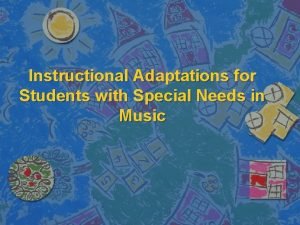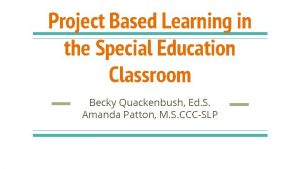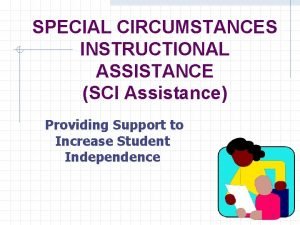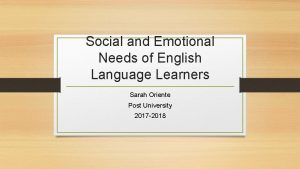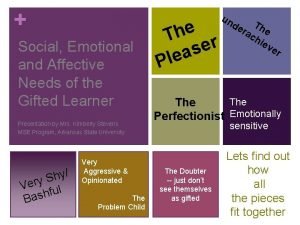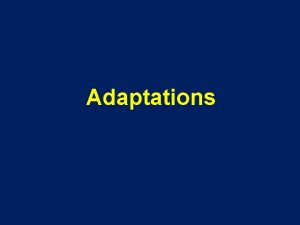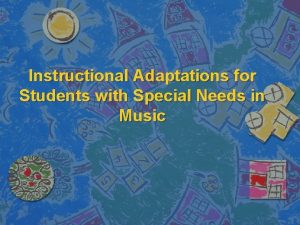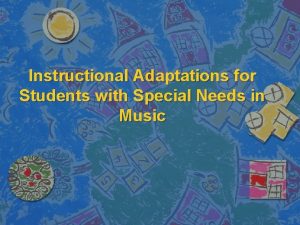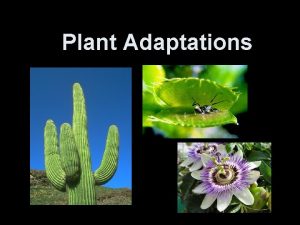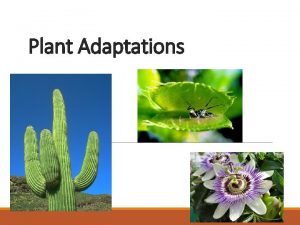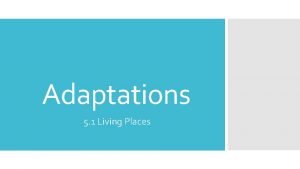Instructional Adaptations for Students with Special Needs in









- Slides: 9

Instructional Adaptations for Students with Special Needs in Music

Adaptations Any adjustment in the environment, instruction, or materials for learning that enhances a student’s performance and allows for at least partial participation. – Accommodations – Modifications

Accommodation Used when the teacher believes that the student can achieve the same level of participation or accomplishment as the rest of the class, but just needs some additional support. – May call for alteration of n n Formatting (oversized font, adapted instrument) Setting (e. g. , secluded space, extra 1: 1 or peer help) Amount of time needed (e. g. , extra practice time, extra time to complete quizzes) Type of response required (e. g. , speak vs. write)

Modification Used when the student is not able to complete the same assignment or participate in the same way as the rest of the class due to the nature of her/his disabilities. Changes the standard of participation or extent of what an assignment or test measures. – Student may: n n n Only complete part of an assignment or test Play or sing a specifically written part to meet her/his ability Have the frequency or duration of her/his participation modified

Adapting Instructional Strategies/Curriculum PARTICIPATION: Vary the level of participation that is expected of a student. INPUT: Adapt the way that instruction is delivered to the student (Multimodal approach). OUTPUT: Adapt how the students can respond to instruction. DIFFICULTY: Adapt the skill level, type of problem, or the rules on how a student may approach a task.

Adapting Instructional Strategies/Curriculum TIME: Adapt the amount of time allotted for completing a task, taking a test, or learning a new skill. ALTERNATE GOALS: While using the same materials for all students, adapt the outcome expectations or goals. SUBSTITUTE CURRICULUM: Provide different curriculum or instructional materials to meet an individual student’s needs (more severe disabilities)

Adapting Instructional Strategies/Curriculum ALTER THE ENVIRONMENT: i. e. . Managing the physical space to promote learning. - Minimize distraction - Seating arrangement (Proximity-Support) - Safety

Adapting Instructional Strategies/Curriculum n ADAPTIVE INSTRUMENTS – Consider the physical demands of each instrument Size and weight (e. g. , striking surface) n Fine vs. gross motor (grasping) n One hand vs. two hands n Mallet vs. no-mallet n Resistance: Force demands n Eye-hand coordination n Etc. . . n

General Strategies n n n n n Multi-Sensory (as much as possible) High expectations (don’t underestimate) Age appropriateness of Music (CA vs. MA) Flexibility in the moment Provide consistent structure Positive attitude Collaborate with other professionals Provide accurate but supportive feedback Patience, sense of humor, warmth
 Instructional adaptations for special needs students
Instructional adaptations for special needs students Project based learning for students with special needs
Project based learning for students with special needs Special circumstances instructional assistance assessment
Special circumstances instructional assistance assessment Primary needs and secondary needs
Primary needs and secondary needs What is target needs
What is target needs Primary needs and secondary needs
Primary needs and secondary needs Henry murray theory
Henry murray theory Strategic gender needs and practical gender needs
Strategic gender needs and practical gender needs Social emotional needs of ell students
Social emotional needs of ell students Affective needs of gifted students
Affective needs of gifted students
